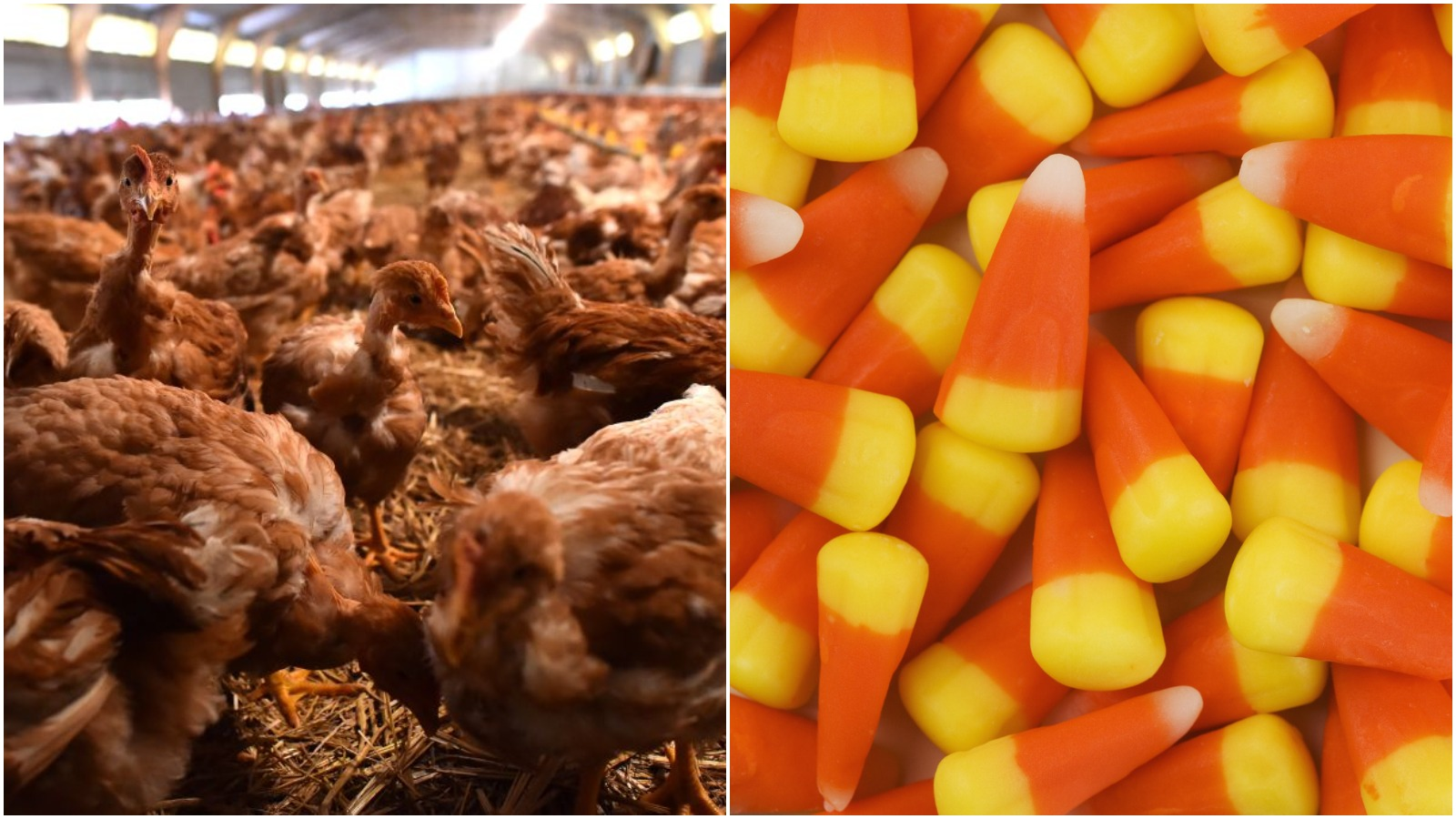Candy Corn Used To Be Called "Chicken Feed" To Appeal To Farm Folk
Before trick-or-treating hit the mainstream, candy companies went after rural communities.
Candy corn, like Che Guevara, is a polarizing conversation topic with the power to turn a casual brunch into a screaming match. I'm a candy corn fan (a fandy corn?), but I respect that the kernels' waxy texture might be off-putting to some. Regardless, today I learned something new about my seasonal fave: per this USA Today story from writer Mike Snider, candy corn used to be known as "chicken feed" in an effort to appeal to rural farmers and their sugar-crazed offspring.
In the article, Snider explains that candy corn was invented in the late 19th century. Philadelphia's Wunderle Candy Company is frequently regarded as the inventor of the candy, although the Goelitz Confectionery Company in Cincinnati acquired the recipe in 1898, National Geographic reports. But the most interesting tidbit has nothing to do with the recipe and everything to do with the fact that the candy companies were desperately trying to appeal to rural communities in the early 20th century.
Spoon University explains that trick-or-treating didn't become widespread until the late 1940s. Before Halloween gained traction as an annual candy fest, confectioners targeted a huge population for candy sales: rural families. With that in mind, Chicken Feed was born as a year-round candy, alongside "sugar pumpkins, turnips, chestnuts, and clover leaves," per Spoon University.
This seems misguided; after all, this population included lots of farming families, who ostensibly spent all day staring at actual chicken feed, pumpkins, and chestnuts. You'd think that this occupation would, theoretically, reduce one's appetite for a sugary version of chicken feed, pumpkins, and chestnuts. However, Chicken Feed/candy corn obviously had major staying power, because it's still with us to this day. Should we take a cue from the early 20th century confectioners and make candy corn a year-round institution? Maybe—as long as we leave the Thanksgiving Feast flavor to wither away in oblivion.
